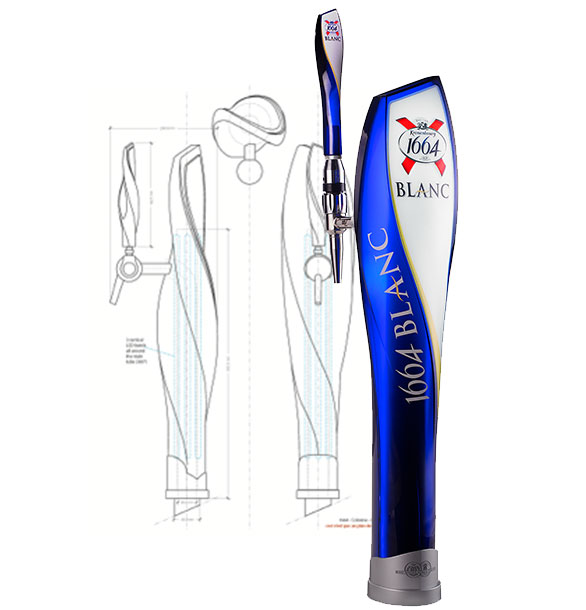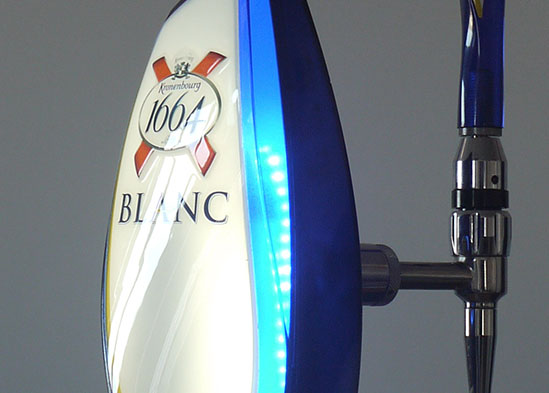
The Global Kronenbourg brands team together with the aligned Design Agency Pixelis developed a radical new proposition for Kronenbourg Blanc. A proposition that at first glance was almost impossible to make. A proposition that in looking closer needed to be carefully refined within the design intent and more importantly within the process technology available to deliver the vision.
The fundamental design intent was to create a twisted mnemonic for the font that was the embodiment of the blue glass associated with Kronenbourg Blanc. This twisted font needed to carry branding and have a inner glow.
As a core part of the Kronenbourg team and working very closely with Pixilis ADS2 were able to manage the processes maintaining the design intent whilst delivering a strategically robust proposition for the new font.
Only though the vertically integrated team within the ADS2 business could all aspects of this challenging font be developed, refined and delivered. We approached the fundamentals within our philosophy.


What, How & Why – without this approach the development stream would not have been able to deliver the cohesive design proposition it did.
Building on tooling requirements –size, splits and cavities we were able to refine and craft the creative vision Working with material; suppliers and process controls we could ensure that we could make plastic look like glass.
Only with these milestones achieved could we fine tune every other aspect of the font to deliver the Kronenbourg Blanc family.
The ADS2 philosophy, approach and ability to work as an integral part of our customers team allows us to harness creativity and vertically integrated thinking to deliver true product plus with no false promise.
'FROM CONCEPT TO REALITY, WE DO NOT CHANGE'.
Explore the case study behind the new Kronenbourg 1664 Blanc bespoke beer font.